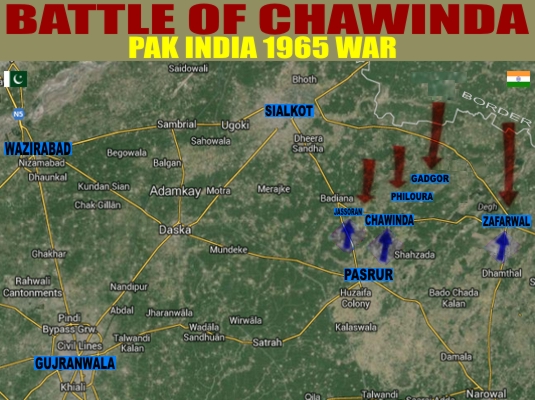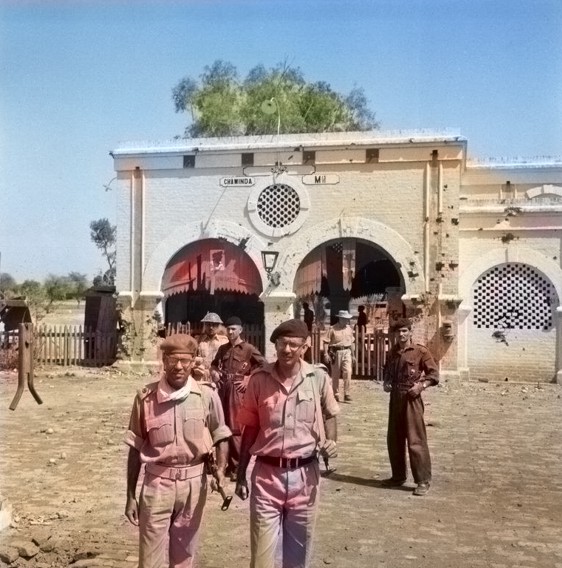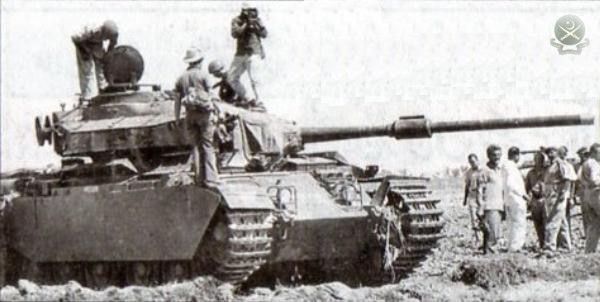|
|
|
Not even twenty-four hours had passed since attack on Lahore, India opened another battle front. The Indian Army advanced into Sialkot with the objective; to bypass the city striking towards Grand Trunk Road and Wazirabad-Gujranwala-Pasrur main railway line, thus cutting off Sialkot from Lahore. As the Indian Army made its thrust into Sialkot, both armies struck each other which resulted in the largest tank battle after World War II.
Forces of Faith again dominated the military might of India. 25 Cavalry Regiment commanded by Lt Col Nisar Ahmed inflicted a severe blow to the mighty Indian 1st Armoured Division. This Indian division being superior in size was repelled by a single Pakistani armoured unit (25 Cav) and was forced to withdraw at Gadgor on 8 September 1965. This move threw the Indian
higher command in trauma for the next two days as they imagined more than just one Pakistani unit present in front of them.
On 11 September 1965, Indians resumed their advance and their whole brunt was
directed against 11 Cavalry and 9 FF which had just relieved 25 Cavalry. 11
Cavalry suffered heavy losses and as a result Philoura fell in the hands of
Indians. This capture made the Indians motivated but they spent another 48 hours
in planning their next move. Pakistanis availed this waste of time to reinforce
their defence opposite Philoura. Indians captured Zafarwal on 12 September but
withdrew on the same day and Pakistani troops occupied Zafarwal later on 13
September.
Indians made limited progress by 14 September and did not launch their planned
infantry assault on Chawinda as the captured area was not enough for maneuver.
Till 15 September, Indians had failed to outflank Pakistani forces in Chawinda.
On the night of 16/17 September, Indians again did not launch their planned
assault on Chawinda due to lack of recce and failing to make any significant
gain. On the evening of 18th September, Indians recaptured Jassoran which was to
serve as a base for launching assault on Chawinda.
On the night of 18/19 September, the Indian 6 Mountain Division finally launched
the continuously planned and postponed assault on Chawinda. Pakistani artillery
effectively engaged the assaulting Indians with such efficiency that wreaked
confusion and their leading troops lost their direction. Before dawn of 19
September, 25 Cavalry along with 4 Corps Artillery engaged the Indians west of
Chawinda and broke their attack. Then the 6 Armoured Division counter attacked
and forced the Indians to abandon Jassoran by evening, this action ended the
last major Indian assault on Chawinda.
After this major clash, fighting reduced and Indian High Command realized that it was impossible to achieve a breakthrough in Chawinda which led to nothing significant till ceasefire. Finally, Indians could not achieve its objective to cut off Pakistani supply line between Sialkot and Lahore and its advance was halted at Chawinda.
One-fifth of an Indian division has been shattered in what has been the greatest tank battle since World War II. For it was here that India's attacking forces came to a dead stop. During the night they threw in every reinforcement they could find. But wave after wave of attacks were repulsed by the Pakistani troops. 'Daily Mirror', Correspondent, September 15, 1965.
Pakistan's decisive victory in historical Sialkot tank battle is confirmed today. 'TIME' Magazine, Special Correspondent, September 21, 1965.








